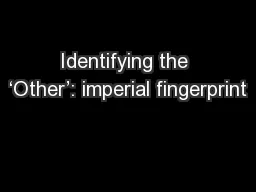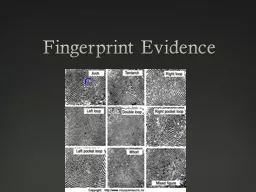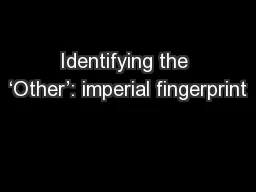PPT-Identifying the ‘Other’: imperial fingerprint
Author : tatyana-admore | Published Date : 2015-11-30
s and the State HI269 Week 4 But first A few reminders Students must get their first short essay titles approved by the end of Week 5 if they wish to write on
Presentation Embed Code
Download Presentation
Download Presentation The PPT/PDF document "Identifying the ‘Other’: imperial fi..." is the property of its rightful owner. Permission is granted to download and print the materials on this website for personal, non-commercial use only, and to display it on your personal computer provided you do not modify the materials and that you retain all copyright notices contained in the materials. By downloading content from our website, you accept the terms of this agreement.
Identifying the ‘Other’: imperial fingerprint: Transcript
Download Rules Of Document
"Identifying the ‘Other’: imperial fingerprint"The content belongs to its owner. You may download and print it for personal use, without modification, and keep all copyright notices. By downloading, you agree to these terms.
Related Documents














